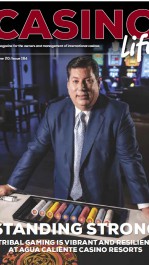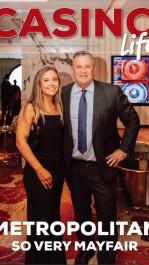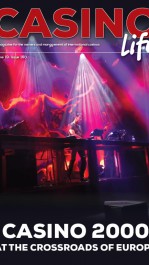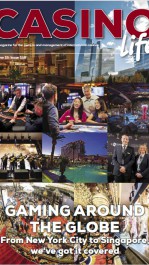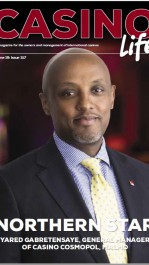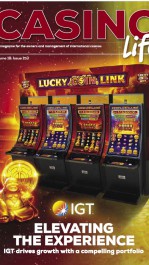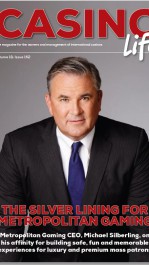It’s no secret that casino operators are hurting. Caesars is drowning under some $30 billion in debt, and they are now turning their major operating unit into a REIT. Casinos as a real estate firm? Well, I guess it makes sense, from a bankruptcy point, I suppose. Casinos in Atlantic City, New Jersey, are closing, including the $2 billion-plus Revel. The State Governor, Chris Christie, wants to move some casinos up north, to the beach. Well, good luck, is all I can say to this idea. And then there are the recent reductions, such as Foxwoods in Connecticut. Newly appointed CEO, Felix Rappaport, had this to say about the problems at Foxwoods:
“We think we have too much gaming.”
That’s a quote, from an article written by Mechael Melia for the Associated Press · November 25, 2014 – http://cdcgamingreports.com/foxwoods-biggest-us-casino-cuts-back-on-gambling/
Admittedly, casinos are facing hardships, to a point where they are cannibalizing themselves to get new customers. At the same time they are lowering the pay tables on their slots and table games, and screwing down the margins to a point where any gaming customer who comes into their casinos suddenly sees their money disappear at breakneck speed, and all before they even have a chance to spot one of the few remaining employees on the floor – or even get a cocktail!
And then there are the casinos themselves. Have you seen the Revel? Who in their right mind spent over $2 billion on this? It doesn’t even look like a casino. It looks like a Bank. Or an office building. Doesn’t that tell you anything? Well, it should. It should tell you that the reason why casinos no longer look like casinos, or perform like casinos, is because they are funded by Banks, operated by Bankers, and none of the executives, or funding hedge funds and their managers, know anything about what a casino is, should be, or how to make it remain consistently profitable. These people know Banks, and Office Buildings, and so that’s what they are creating. Go to any of these “modern” casinos, or those recently acquired or “remodeled” by money from Bankers and investment funds, and what you’ll see are impersonal, cold, bland, uninspiring and eviscerated barns that look like the lobby of a Manhattan Bank, instead of a vibrant and exciting casino full of gambling thrills and action.

At the same time all of these gaming executives, fund managers and Bankers, and others in the financial world all complain that these investments are floundering and the ROI just isn’t there. So we have closings, reductions, downgrades, mergers, staff lay-offs, service cutbacks, and so on. And while this is going on, we now have a top executive saying: “We think we have too much gaming.”
So what IS the problem?
I happen to know Felix Rappaport, and he’s no dummy. He certainly is no slouch when it comes to running a successful casino. When I learned of his appointment to Foxwoods, my first thought was: Great! Here is someone who understands the problems. And someone who is himself from the East Coast – from Philadelphia no less – and so he’s got his finger right on the pulse of that business and that business model, and understands the world of casinos and casino players.
So – what happened?
How is it that a great guy like Felix can make such a statement?
I suspect that it’s because of the pressure of funding, taxes, revenue declines, and so on. And attrition of the “traditional” profitability.
And the answer?
Rip out the slots and table games and put in – ummm, oh OK – let’s see .... a Nightclub. That’s it! Take out the casino games which make 20% to 40% profit, and replace them with a Nightclub. Or, a Shopping Mall, each of which will make us – ummm – well, about 1% to 6% profit. On a good day.
Oh yeah, and while we’re at it, let’s also fire more people and make it even harder for casino gamblers to get any service. And, oh yeah, let’s also get the slots down to the bare minimum payback allowed by the State. And, ummm – while we’re at it, let’s tear down one of the casinos and put up – what? Ummm, OK ... how about a Ferris Wheel! Yeah! Or, maybe a Sports Arena. Or, ummm ... what is that thing they’re doing in Vegas ... oh yeah, rip out the casino altogether and let’s make this into a park with Cafes and Strolling walks for kids. A brilliant idea all around. Right?
OK, so all of this is illustrative, of course, and I am not ascribing it to Mr. Rappaport. Only his actual quote, and the removal of about 1,000 slots and about 100 table games, and the building of Nightclubs – as mentioned in the above paragraphs – are factual as relevant to him and Foxwoods. The rest is related to other business blunders being made in Las Vegas. Those that are caused by others, also on financial strings, and manipulated by Bankers and financiers who know nothing about casinos.
So what’s the solution? How do we get casinos profitable again? Without turning them into shopping malls or parks?
I recently sat in a meeting room full of casino executives, and I asked them a simple question: How many of you have ever been professional gamblers? No answer. Not one hand went up. So, I asked another question: How many of you have ever been semi-professional gamblers? Again, no answer, and no hands. So, I asked another question: How many of you play casino games regularly, say once a week, outside of your job requirements? Well? None. So, another question: How many of you, and your respective teams, have been to a casino in the last month for anything other than business reasons?
From casino executives, whose job it is to run, operate, manage, supply, market, foster, and make profitable, you’d expect all hands up in the air. Right? Well, in a word: No. None. Not one. Nobody. None of the people in the “Ivory Tower” of the Executive Suites, or their “teams” ever went to a casino for anything other than the requirements of their business. None of them played, or knew about the games much, or anything about what a casino used to be, how it was, and how it should be. To all of them the casino was nothing more than a building into which was placed a “product”, and that “product” had to be “managed” to make money. If it did not, it was tossed out and replaced. The customers weren’t “customers” or “guests”, they were “numbers” in a “stat sheet”, and their value was “coin-in” and “time-on-device” or “hours-at-table”, and – cumulatively – they were generally referred to as “cost to profit ratio.”
And how was this data mined? In person? Directly from the “customers”? Well, you’d think so, right? But you’d be wrong!
Such “customer data” has become nothing more than event-reports generated by the player tracking software and machine data-dumps. The human equation, and the human element, has been completely obliterated from the casino operating philosophy, and replaced with nothing more than streams of endless, mindless, and impersonal numbers being fed by computers to other computers, and then regurgitated in endless spread sheets and graphs upon which the operational methodology of the casino is then built.
Stuff like that turns on math geeks, statisticians, and Bankers and fund managers. But it does nothing to make a casino profitable.
In fact, by so totally dehumanizing the casino experiences, and its operating protocols, this very system that is so prized by Bankers and financiers who lord over and control the casino corporations today, are that which is directly responsible for the operational flaws, woes, and ever-shrinking profits.
This problem has become symptomatic industry-wide, and is insidiously infecting every aspect of operations, manufacturing, supply, ambiance, experience, and overall status of the gaming industry in its global entirety.
Yet the solution is simple. Very simple.
What is it?
It’s not anything new, or particularly brilliant. It’s always been here, and has always been part of the casino business. It goes like this:
Casino first, second, last, always, and in between everything. Period!
Forget the shopping malls. Every city has one. Forget the Ferris Wheels. People who want that kind of entertainment can go to Six Flags, or to Disneyland, or to any other city, or destination. Forget the Nightclubs and Day Clubs. All they do is foster hooliganism, and keep people away from the one thing that’s actually profitable: The Casino!
Stop building casinos that look like office buildings. Stop renovating casinos to make them look like some kind of a stainless-steel kitchen for a celebrity chef. Start hiring on-the-floor customer service staff. Start making the Slots pay better. Stop throwing out lucky Blackjack players because your table-tracking says he’s a card-counter. Hogwash! Only less than 1% of all people who learn to count cards can actually do it well enough to make money from it. Embrace card counters and skilled players. Make the casino what it should be: A place for Gamblers! Create in your property a casino that is not an “afterthought”. It is – and should be – the ONLY thing that is your priority. If so seen and understood, then it will make you money like a flowing tsunami of cash. Period!
Casinos are for gamblers. Make them so again, and you’ll need truckloads to haul away all the cool cash and profits. And you’ll become the darling of the gaming world.
All of this is how Las Vegas came to be, and why it was so profitable for so long. Until the bankers and financiers got to lord over the casino executives, when the old casino operators and innovators died off, or retired. So, that’s why we have the mess that exists today.
And young gamblers? That’s another excuse. “Oh, the young people don’t like to gamble.” That’s what is being heard in boardrooms everywhere as we speak. But why is that so? Is it because young people don’t like to gamble? No, they certainly do. The problem is that YOU – the casino executives, operators, and manufacturers – have failed to TEACH them HOW! And to show them the excitement of it, and the thrill of it.
But to do so, you yourselves must be part of that thrill, and that experience. If you’re not in the casino at least twice a week playing with the people to supplement your income, or at least see what it’s all about, then you don’t know what it is – or why it’s important to your players. So how can you teach it? Well, you can’t. And if you can’t do it, or don’t want to, then listen to those who CAN so teach. Embrace them, make them part of your Marketing Plans, and let them drive players to YOUR casino. And then sit back and see how casino profits quickly rise. Do this, and you won’t have to take away from the casino. Instead, you’ll be tearing down the silly Nightclubs, Parks, Arenas, Shopping Malls, and so on – and building more casinos, adding slots and table games, and more and more staff to handle all the happy players.
It’s not the cannibalization of the market, or the attrition of the traditional player, or the lack of profitability in the casino formula that’s the issue. It’s the understanding that a “casino” is a different animal, and that it – or any of it’s components or supply – cannot be marketed or handled or managed as if it was any other product, be it cars, refrigerators, toasters, or “family vacations.” There are plenty of already-existing markets that more than adequately cater to those requirements from the public. Casinos aren’t it. Casinos are unique, and should be a unique experience. Make it so again, and the money will flow like honey. Your coffers will be full, and all the Bankers and financiers will smile.
And that’s what I’d like to see in the casino business – happy bankers, happy financiers, and happy customers. Go back to the simple basics – the casino – learn how to cater to the gambler in all of us, and then it will all be Oh so easy.
Victor H Royer is President of Gaming Services & Research. He is a 32 year veteran of Las Vegas gaming, a 25 year consultant to the gaming industry, and author of 40 books on casino games and gaming. In addition he has researched and authored more than 300 industry reports on the subject of player preferences, marketing, player development and customer relations, and published over 4,000 articles on casino games and the casino industry. He can be reached at: DrVHR@aol.com & Twitter @GamingAuthor.

.gif)

